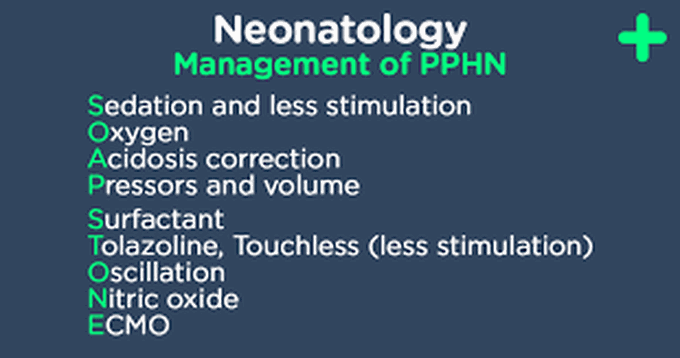


Treatment of PPHN
The goal of treatment is to increase oxygen levels in the blood, open the blood vessels in the lungs, and maintain a normal blood pressure. This is done with oxygen, medicines, and fluids. Your baby may get oxygen by: Nasal cannula: A small tube with prongs is placed in the nostrils and hooked up to oxygen. Continuous Positive Air Pressure (CPAP): This machine gently pushes air or oxygen into the lungs. Ventilator: This machine will breathe for your baby until the baby can breathe on their own. The physician will put a breathing tube down their windpipe. This is called intubation (in-too-BAY-shun). The breathing tube is then hooked up to the ventilator. The ventilator is programmed to give your baby even and regular breaths. High frequency oscillation ventilation: This is a special type of ventilator. It can deliver rapid, short bursts of air through a breathing tube. Medicines and fluids are given by intravenous catheter (IV). A small, flexible tube is put into 1 or 2 of the blood vessels. It is also used to get blood samples. The IV tube is placed in either: The umbilical cord, called an umbilical IV An arm or leg, called a peripherally inserted central catheter (PICC line). The PICC line goes from the arm or leg and ends in a large blood vessel near the heart. The types of medicines given are: Blood pressure medicine: to keep the blood pressure at the right level Antibiotics: to treat or prevent infection Sedatives: to help your baby rest and stay calm. When the baby is calm, the machines that give him oxygen can work better and he may need to use less. Surfactant: to help the lungs work better. Surfactant allows the lungs to use oxygen and get rid of carbon dioxide. It is given to the baby through a breathing tube.

